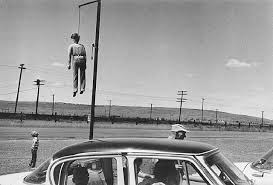| Diane Arbus |
 |
| Diane Arbus |
Gary Winogrand was a New Yorker who roamed the U.S. during postwar decades and left behing a sweeping portrait of American Life. His photos powerfully combine the hope and exhilaration in addition to the anxiety and turbulence that came over America during that time.
 |
| Gary Winogrand |
 |
| Gary Winogrand |
 |
| Gary Winogrand |
Lee Friedlander began photographing the American social landscape in 1948 and has created humorous and poignant images among the chaos of city life, dense landscape, and countless other subjects throughout his career.
 |
| Lee Friedlander |
 |
| Lee Friedlander |
Capturing New Social Landscape can be difficult because you have to look for the “ugly” parts of society created by humans. Unfortunately, it is all around if you look in the right places. When I approached this type of photography I drove around and just photographed the world around me, mostly the ugly or depressing parts. One of the best things about New Social Landscape is that it doesn’t require much editing. Just careful angles and good composition all throughout. I decided to convert my photo to gray-scale, however that was just my personal preference because I felt as though it was a stronger image in just black and white versus color. Below I have attached my work in New Social Landscape.



